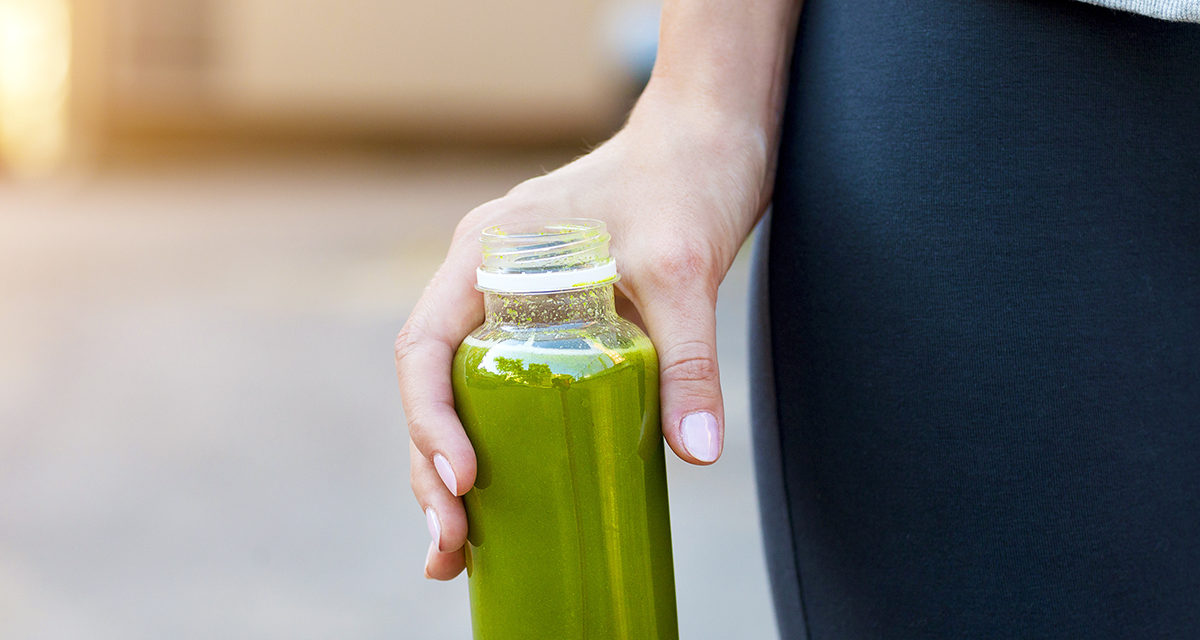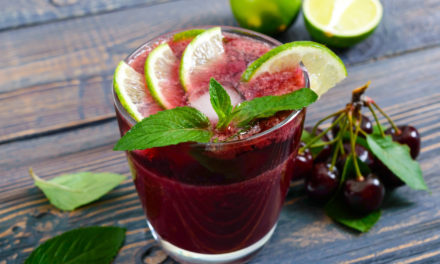In theory, a smoothie should be great for you—a quick, easy-to-drink meal in a glass, loaded with all the nutrients and goodness you need to jumpstart your day (or recover from a workout or just because it’s a Thursday afternoon or…). The problem comes in when we flood our smoothies with sugar-laden juices and fruits, which make it more pleasing to the taste buds but less friendly to the body, nixing some of the health benefits of the sucker in the first place.
So lets pump the breaks and rethink the smoothie, one ingredient at a time.
Base
Liquid: Water, aloe vera juice, orange or cranberry juice
Semi-liquid: Yogurt, milk, dairy, nut milk
Solid: Ice
Tip: Ice doesn’t have to mean water. Sometimes I juice tons of vegetables and pour the juice into ice trays to freeze. Know why? Because I can’t stand cleaning my juicer.
Body
Smoothies need matter. Not necessarily frozen matter but the colder the better and the thicker the better. That means frozen berries, roasted squash or sweet potato, and raw summer squash.
Don’t lean on the pillow of fruit. This will increase the amount of sugar in your smoothie exponentially. Get creative with vegetables!
Keep with the seasons. Use fruits and vegetables that may already be going into another dish so that you can reduce the total amount that you need to buy.
Boosters
Try to include as many boosters as you can in your smoothies. It may be one expensive trip to the health food store, but boosters keep for a long time in their form and they add a lot of nutrient density in a very small amount. Plus, some boosters are cheap and they’re already in your possession, like cinnamon, for instance. Keep in mind that they may have to be refrigerated or frozen.
When you choose what to put in your smoothie, think outside the box. Don’t be pigeonholed by strawberry banana with sweetened yogurt. You’re better than that!
Smoothie “Try Me” List
Base
Greek yogurt, orange juice, water, coconut fat or milk, green juice, ice cubes, almond milk
Body
Spinach, carrots, roasted sweet potato, kale, beets, green peppers, arugula, zucchini, avocado, cooked beans, snap peas, fennel root, cucumber, roasted butternut squash, strawberries, citrus fruit, banana, raspberries, pears, kiwi, blackberries, apples, peaches, nectarines, pineapple, mango, Thai coconut
Boosters
Cacao powder, Maca root powder, turmeric, chia seeds, chlorophyll, ginger root, flax seeds, cinnamon, vanilla (alcohol-free), Spirulina, cardamom, almond butter
Words to Know
Chia seeds – They are small, high-fiber seeds found in most stores in the Natural Foods section of the grocery store. These Peruvian seeds are a good source of Omega-3s and high in soluble fiber, however, they need to be refrigerated or frozen to last.
Chlorophyll – Want to know why plants are green? It’s because of Chlorophyll! Drops of this expensive, extraordinarily nutritious liquid are difficult to find, although they are certainly at Whole Foods Market.
Flax seeds – very similar to chia seeds, but flaxseed can be found in ground form in most stores in the Natural Foods section of the grocery store. Flaxseeds are another good source of Omega-3s and high in soluble fiber. Ground flax seeds make a great egg replacer when soaked in water.
Maca root powder – Maca is a starchy root vegetable similar to Yucca, except it has a lovely round sweet vanilla flavor. Maca can be found in powder form in some health food stores.
Spirulina – This a green seaweed found in powder form in most health food stores. Spirulina has a naturally sweet flavor and is full to bursting with essential minerals.
Sound good? Here’s a jump start with one of my personal favorites?
Mango Chia Lime Smoothie
Ingredients
1 cup frozen mango
1 cup greens (spinach, kale, etc.)
½ lime, juiced
½ green apple, cored and sliced
3 baby carrots or 1 medium carrot
1 cup orange juice, aloe vera juice, or mango puree
1 cup water
Directions:
Combine ingredients in a high-powered blender and blend until very smooth. Serve immediately.







I don’t see chia listed in the Mango “Chia” Lime Smoothie recipe. How much chia do you need? Also, do you grind them and turn them into a powder first? Or do you soak them in water first? More info needed. I don’t want gummy chia seeds stuck in my teeth all day!